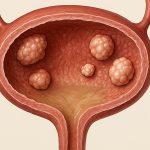The sensation of pressure shifting from the bladder area towards the back is something many people experience at some point, often causing significant worry and discomfort. It’s a complex symptom that can arise from a surprisingly broad range of causes – from relatively benign issues to more serious underlying conditions. Understanding what might be happening when you feel this type of pressure, and knowing when it warrants medical attention, is crucial for peace of mind and proactive health management. This article aims to explore the potential reasons behind this sensation, offering insight into possible origins and outlining a path toward seeking appropriate support if needed.
It’s important to preface any discussion about bodily sensations with the understanding that everyone experiences things differently. What feels like intense pressure to one person might be mild discomfort for another. Moreover, our psychological state – stress levels, anxiety, even simple fatigue – can significantly influence how we perceive physical symptoms. This means pinpointing the exact cause of bladder-to-back pressure requires careful consideration and often involves a process of elimination with the help of healthcare professionals. We’ll focus on providing information to empower you to understand your body better and advocate for yourself when seeking medical guidance, rather than offering specific diagnoses or treatment plans.
Understanding the Anatomy & Potential Connections
The feeling of pressure moving from the bladder to the back isn’t random; it reflects the intricate anatomical relationships within the pelvic and lower back regions. The bladder, kidneys, ureters (the tubes connecting kidney to bladder), rectum, and various muscles all reside in close proximity. Inflammation, irritation, or dysfunction in any of these structures can radiate discomfort to neighboring areas. Nerves also play a pivotal role – they share pathways and overlap, meaning that pain originating in one location can be felt elsewhere (referred pain). For instance, issues with the kidneys, situated higher up in the back, can sometimes manifest as lower abdominal or bladder pressure.
The pelvic floor muscles, which support organs like the bladder, uterus (in women), and rectum, are another key component. Weakened or overly tense pelvic floor muscles can contribute to a variety of symptoms, including pressure sensations. These muscles interact closely with the diaphragm and lower back musculature; therefore, imbalances in one area can influence others. It’s also important to consider that the lumbar spine itself can be a source of referred pain, mimicking bladder-related discomfort. A herniated disc or spinal stenosis (narrowing of the spinal canal) could potentially create sensations felt in the pelvic region.
Finally, dehydration is often overlooked but plays a significant role. Insufficient fluid intake leads to more concentrated urine, which can irritate the bladder and cause pressure, sometimes radiating to the back as the body attempts to compensate or adjust. Recognizing these anatomical connections helps explain why this particular symptom presentation is so common and why it requires careful evaluation.
Common Causes & Contributing Factors
A multitude of factors can contribute to the sensation of pressure moving from the bladder to the back. Urinary Tract Infections (UTIs) are perhaps the most well-known cause, often accompanied by burning sensations during urination, frequent urges, and cloudy or strong-smelling urine. However, even mild UTIs can present primarily as pressure without typical urinary symptoms. Another common culprit is Interstitial Cystitis (IC), also known as painful bladder syndrome, which causes chronic bladder pain and pressure without evidence of infection. IC often involves fluctuating symptoms that can wax and wane over time.
Beyond the bladder itself, kidney stones can cause intense flank pain radiating to the lower abdomen and groin, sometimes mimicking bladder pressure. Pelvic floor dysfunction, as mentioned earlier, is a frequent contributor, especially in individuals who have experienced childbirth, surgery, or chronic constipation. Constipation can directly increase pressure on the pelvic organs, leading to discomfort that radiates towards the back. Furthermore, conditions like endometriosis (in women) or prostatitis (in men) – inflammation of the prostate gland – can also cause referred pain and pressure sensations in this region. Lifestyle factors, such as prolonged sitting, poor posture, and stress, can exacerbate these symptoms.
Investigating Potential Kidney Issues
The kidneys are responsible for filtering waste from the blood and producing urine. Any disruption to their function can result in discomfort that extends beyond the back itself. – Kidney infections (pyelonephritis) often cause fever, chills, flank pain, and nausea, but early stages might present as vague pressure sensations. – Polycystic Kidney Disease, a genetic disorder causing cysts to grow on the kidneys, can lead to chronic pain and pressure. – Hydronephrosis, or swelling of the kidney due to urine blockage, is another potential cause that requires prompt medical attention.
Diagnosing kidney-related issues usually involves imaging tests like ultrasounds or CT scans, along with blood and urine analysis. It’s crucial to differentiate kidney problems from bladder issues because treatment approaches differ significantly. If you suspect a kidney problem – particularly if accompanied by fever, chills, or severe pain – seek immediate medical evaluation. Remember that self-diagnosing is never advisable; professional assessment is essential for accurate diagnosis and appropriate care.
The Role of Pelvic Floor Dysfunction
Pelvic floor dysfunction encompasses a range of conditions affecting the muscles supporting pelvic organs. These muscles are vital for bladder and bowel control, sexual function, and core stability. – Weakened pelvic floor muscles can lead to urinary incontinence (leakage), prolapse of pelvic organs, and a general feeling of pressure or heaviness in the pelvic region. – Overactive pelvic floor muscles, conversely, can cause pain, spasms, and difficulty relaxing these muscles, leading to similar pressure sensations.
Treatment for pelvic floor dysfunction typically involves pelvic floor physical therapy, which focuses on strengthening or relaxing the muscles through targeted exercises and techniques. Biofeedback, a method that helps you become aware of your muscle contractions, is often used in conjunction with therapy. Lifestyle modifications like avoiding straining during bowel movements and maintaining good posture can also contribute to improved pelvic floor function.
When To Seek Medical Attention
While many instances of bladder-to-back pressure are mild and resolve on their own, certain symptoms warrant prompt medical attention. – Severe pain that is unrelenting or interferes with daily activities should always be evaluated by a healthcare professional. – Fever, chills, or blood in the urine are red flags indicating a potential infection or other serious condition. – Sudden changes in urinary habits, such as difficulty urinating, frequent urination, or urgency, also require medical assessment.
- If you experience pressure accompanied by lower back pain that radiates down your leg, it could indicate a spinal issue and should be evaluated promptly. Don’t hesitate to consult your doctor if the pressure persists for more than a few days, is worsening, or is causing significant distress. Remember that early diagnosis and treatment are often key to preventing complications and improving long-term outcomes. A thorough medical evaluation can help identify the underlying cause of your symptoms and guide you toward appropriate care.





















